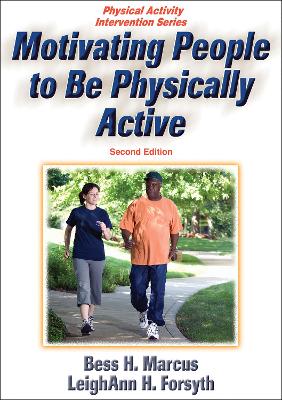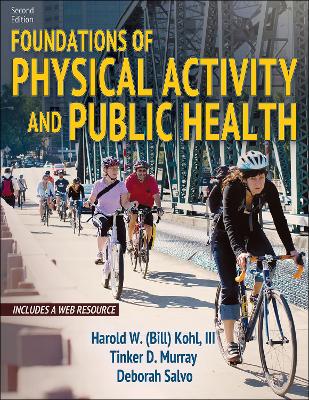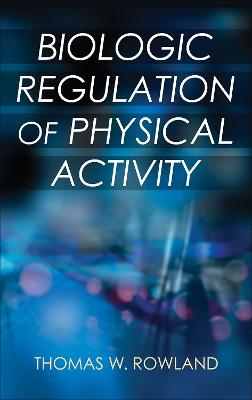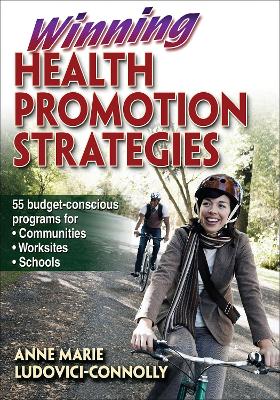Motivating People to Be Physically Active
 -15%
portes grátis
-15%
portes grátis
Motivating People to Be Physically Active
Forsyth, LeighAnn H.; Marcus, Bess H.
Human Kinetics Publishers
09/2008
216
Mole
Inglês
9780736072472
15 a 20 dias
454
Physical Activity Intervention Series Preface
Preface
Acknowledgments
Part I Theoretical Background and Tools for Measuring Motivational Readiness
Chapter 1 Describing Physical Activity Interventions
Physical Activity Recommendations
Definitions of Physical Activity, Exercise, and Physical Fitness
Physical Activity Interventions
Theoretical Models
Motivational Readiness for Behavior Change
Conclusion
Chapter 2 The Stages of Motivational Readiness for Change Model
Motivational Readiness and the Stages of Change
Match Treatment Strategies to Stages of Change
Processes of Behavior Change
Conclusion
Chapter 3 Integrating Other Psychological Theories and Models
Learning Theory
Decision-Making Theory
Behavioral Choice Theory
Social Cognitive Theory
Ecological Model
Relapse Prevention Model
Conclusion
Chapter 4 Putting Theories to Work By Looking at Mediators of Change
Consider Mediators of Physical Activity Behavior Change
Factors That Enhance Physical Activity
Unlock the "Black Box"
Conclusion
Chapter 5 Using the Stages Model for Successful Physical Activity Interventions
Imagine Action: A Community-Based Program
Jump Start to Health: A Workplace-Based Study
Jump Start: A Community-Based Study
Project Active: A Community-Based Study
Project STRIDE: A Community-Based Study
Step Into Motion: A Community-Based Study
Conclusion
Part II Applications
Chapter 6 Assessing Physical Activity Patterns and Physical Fitness
Discovering Patterns of Physical Activity Behavior
Determining Intensity Level
Tracking Physical Activity Behavior
Assessing Fitness
Assessing Physical Activity and Fitness in Group Settings
Conclusion
Chapter 7 Using the Stages Model in Individual Counseling
Physical Readiness
Physical Activity History
Psychological Readiness
Confidence
Set Short- and Long-Term Goals
Measure Success
Conclusion
Chapter 8 Using the Stages Model in Group Counseling Programs
Leading a Stage-Based Group
Learning From a Sample Stage-Based Curriculum
Assessing Your Effectiveness as a Leader
Conclusion
Chapter 9 Using the Stages Model in Work Site Programs
Building Support for Your Program
Assessing Motivational Readiness
Choosing Your Target Audience
Reaching Your Target Audience
Developing Stage-Matched Materials
Focusing on Moderate-Intensity Activity
Planning Events
Adding Incentives for Participation
Conclusion
Chapter 10 Using the Stages Model in Community Programs
Assessing the Community's Readiness for Change
Reaching Individuals Within a Community
Developing Stage-Matched Messages
Using a Media-Based Approach to Reach Your Target Audience
Working With Community Leaders to Reach Your Target Audience
Conclusion
Appendix A: Questionnaires
Appendix B: Additional Resources
References
Index
About the Authors
Physical Activity Intervention Series Preface
Preface
Acknowledgments
Part I Theoretical Background and Tools for Measuring Motivational Readiness
Chapter 1 Describing Physical Activity Interventions
Physical Activity Recommendations
Definitions of Physical Activity, Exercise, and Physical Fitness
Physical Activity Interventions
Theoretical Models
Motivational Readiness for Behavior Change
Conclusion
Chapter 2 The Stages of Motivational Readiness for Change Model
Motivational Readiness and the Stages of Change
Match Treatment Strategies to Stages of Change
Processes of Behavior Change
Conclusion
Chapter 3 Integrating Other Psychological Theories and Models
Learning Theory
Decision-Making Theory
Behavioral Choice Theory
Social Cognitive Theory
Ecological Model
Relapse Prevention Model
Conclusion
Chapter 4 Putting Theories to Work By Looking at Mediators of Change
Consider Mediators of Physical Activity Behavior Change
Factors That Enhance Physical Activity
Unlock the "Black Box"
Conclusion
Chapter 5 Using the Stages Model for Successful Physical Activity Interventions
Imagine Action: A Community-Based Program
Jump Start to Health: A Workplace-Based Study
Jump Start: A Community-Based Study
Project Active: A Community-Based Study
Project STRIDE: A Community-Based Study
Step Into Motion: A Community-Based Study
Conclusion
Part II Applications
Chapter 6 Assessing Physical Activity Patterns and Physical Fitness
Discovering Patterns of Physical Activity Behavior
Determining Intensity Level
Tracking Physical Activity Behavior
Assessing Fitness
Assessing Physical Activity and Fitness in Group Settings
Conclusion
Chapter 7 Using the Stages Model in Individual Counseling
Physical Readiness
Physical Activity History
Psychological Readiness
Confidence
Set Short- and Long-Term Goals
Measure Success
Conclusion
Chapter 8 Using the Stages Model in Group Counseling Programs
Leading a Stage-Based Group
Learning From a Sample Stage-Based Curriculum
Assessing Your Effectiveness as a Leader
Conclusion
Chapter 9 Using the Stages Model in Work Site Programs
Building Support for Your Program
Assessing Motivational Readiness
Choosing Your Target Audience
Reaching Your Target Audience
Developing Stage-Matched Materials
Focusing on Moderate-Intensity Activity
Planning Events
Adding Incentives for Participation
Conclusion
Chapter 10 Using the Stages Model in Community Programs
Assessing the Community's Readiness for Change
Reaching Individuals Within a Community
Developing Stage-Matched Messages
Using a Media-Based Approach to Reach Your Target Audience
Working With Community Leaders to Reach Your Target Audience
Conclusion
Appendix A: Questionnaires
Appendix B: Additional Resources
References
Index
About the Authors











